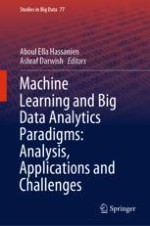2021 | OriginalPaper | Buchkapitel
Soil Morphology Based on Deep Learning, Polynomial Learning and Gabor Teager-Kaiser Energy Operators
verfasst von : Kamel H. Rahouma, Rabab Hamed M. Aly
Erschienen in: Machine Learning and Big Data Analytics Paradigms: Analysis, Applications and Challenges
Aktivieren Sie unsere intelligente Suche, um passende Fachinhalte oder Patente zu finden.
Wählen Sie Textabschnitte aus um mit Künstlicher Intelligenz passenden Patente zu finden. powered by
Markieren Sie Textabschnitte, um KI-gestützt weitere passende Inhalte zu finden. powered by
